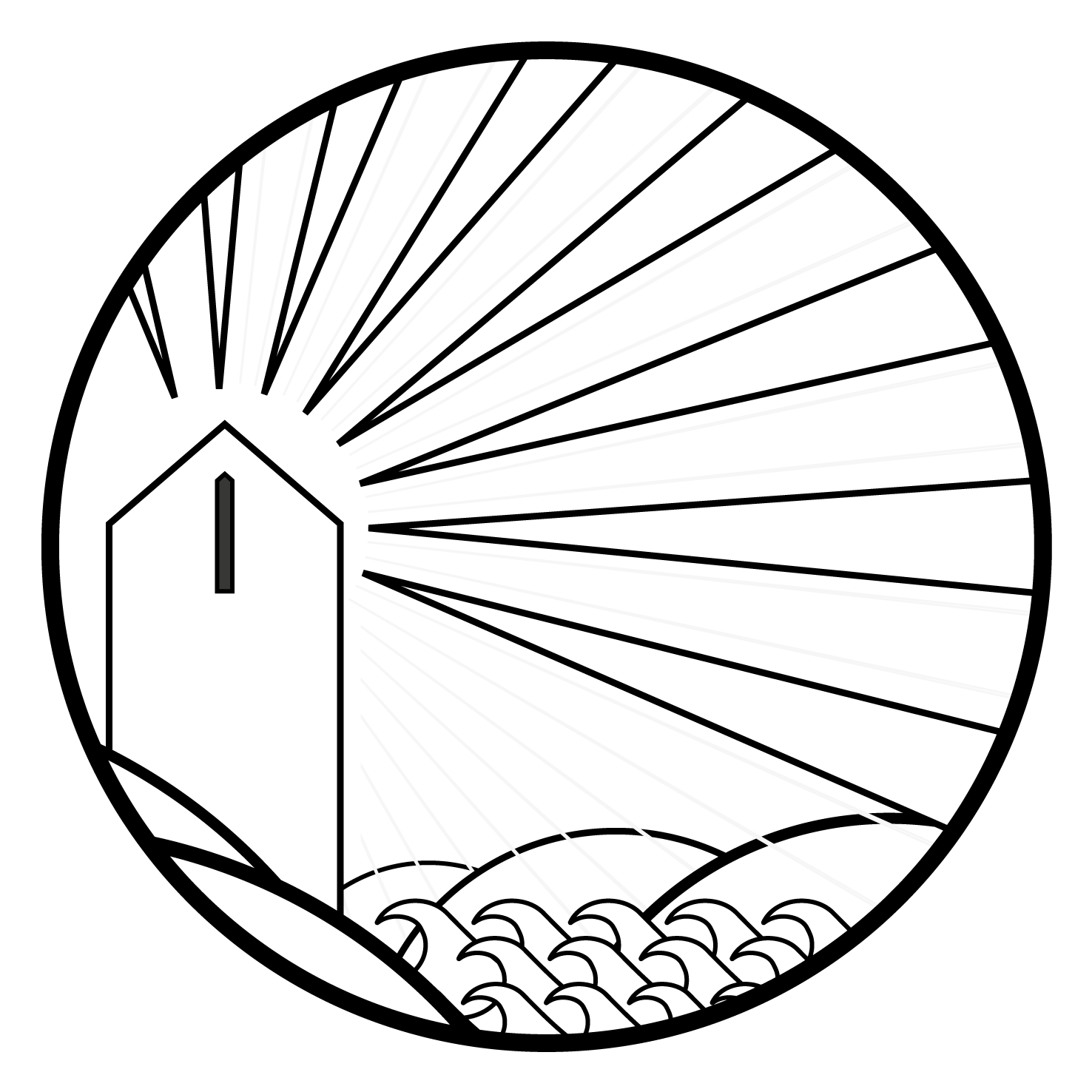AURA
Designing a participative visiting experience

This website is the result of a Master thesis academic final hand-in of a social and participatory design project.
This project aims to innovate the visitors' experience at the religious destination of “Selja Kloster” on the west coast of Norway. The project is based on social design and environmentally sustainable guidelines.
Design methods are used to provide: new visitor centers, spiritual and symbolical objects, meeting spots for social interaction between elderly, young, locals and foreign visitors.
Click the button to read the written Master Thesis that inspired this design project
This project promotes activity, sustainability, know-how, culture and spirituality through the development of a holistic system that includes places and symbolical objects.
The contribution is to tourism, culture, heritage, activity, sociability, mental and physical health.
The local municipality of "Stad Kommune" in collaboration with "Pilgrimsleden" of Norway are responsible for any future choices, approvals and improvements undertaken on the island of Selja and on its natural surroundings.
Click the button to visualize the written explantation of this design project
Location: Selja Abbey
First Christian site in Norway and Saint Sunniva
Knowing the history and the legends
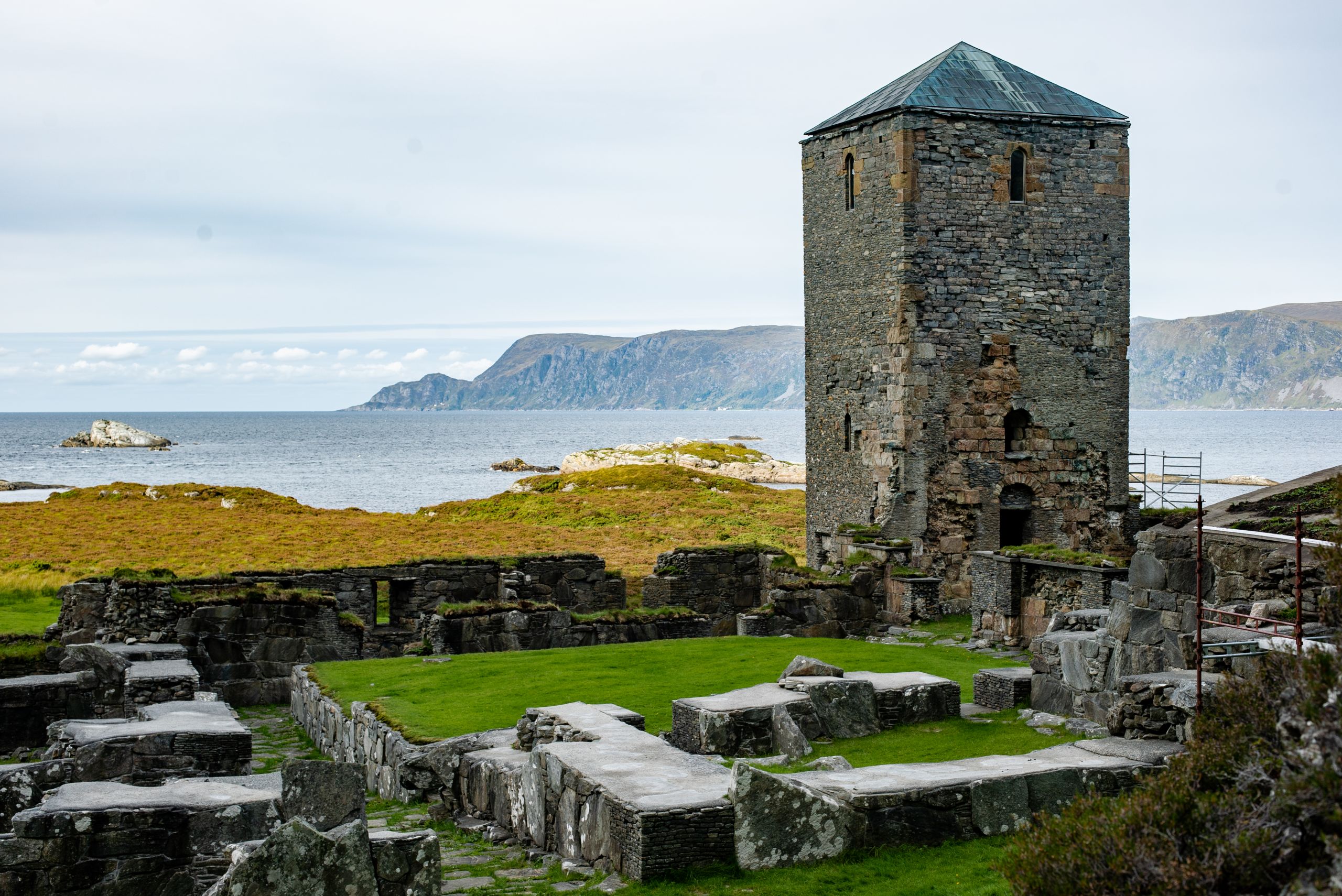
"Selja Kloster" is an ancient Benedictine monastery located on the west coast of Norway. It is one of the first Norwegian sites of Christianity. The monastery ruins are today one of the most important pilgrim destinations in Norway.
The construction of the Benedictine monastery is seen in the context of the legend of "Saint Sunniva". Sunniva was the heir of an Irish kingdom who had to flee from a heathen king. She fled to the island of Selja where she died.
996 AD: Selja became the first holy place in Norway.
1068 AD: Selja became one of the three first bishoprics dioceses in Norway.
1100 AD: the monastery was built.
Saint Sunniva's legend
Text by "Acta Sanctorum in Selio".
Edited by Torkjell Djupedal. Translated by Anders Anderssen
Ireland - 10th century
In those days when emperor Otto the Great was the ruler, the holy Sunniva lived in Ireland. She was a princess, and when her father died, she inherited his kingdom. She was, herself, living a holy life, adhering closely to all Church rules, and was merciful and kind to poor people.
The tidings of Sunniva's piety, beauty and power became widely known, and reached a fierce Viking chieftain. The devilish idea struck him, to ravage and conquer her realm. Later on he tried, using sweet words and threats, to make her his wife. However, being filled with love of God, she resisted his charms as well as threats. She would rather escape from the land of her forefathers than marry that godless man.
The altar and the original church area are still used today for religious services.
Many of her clan wanted to share her fate. They boarded three ships, men, women and children. They put their trust in the sea, and thus escaped all the worldly temptations. Neither sails nor oars or rudders were to be used; they left their fate entirely in God's hands.
Winds and currents brought them northward. But God rules storms and oceans, protected them against all dangers, and led them safe to that part of Norway where «firdane» live. Those people were savage and ignorant heathens.
When they saw God's holy men approach their hamlets, they called their own men to arms and met them with swords and bows as if fighting raiders. However, when they did not manage to reach them, they were content with chasing them far from the shores with rocks.
Then, the holy men were again subject to all the dangers of the open seas. A storm blew up. And those who in faith and spirit never could be separated now were scattered in the bodily sense. When the storm came to an end, the holy Sunniva and most of her followers landed at the island Selia. Here, fearing the heathens, they stayed in caves. In the same manner, the others settled down on another island called Kinn, where they stayed alive by catching fish.
At this time, Håkon jarl, the worst of all despots, had forcibly subdued the realm of Norway, and was harassing the people. During his reign, the holy people stayed for a long time on the islands. They served Christ in austerity, poverty and a pious life. The local people had not yet settled permanently on these islands, but used them for pastures.
The farmers' cattle out there sometimes were lost. Then the farmers started to suspect the holy ones of thievery and thus great injustice occurred in various ways. They even asked the earl to bring men-at- arms and kill God's servants.
The godless earl came to the island and intended to do away with the holy flock. When seeing the enemy approaching, they sought refuge in the cave, crying and praying to God that he would let their souls rest in eternity and let his angels break down the mountain and bury them. Their prayers were granted. The mountain fell down holy witnesses, and their souls rose to heaven. The despot and his flock of heathens never discovered the holy ones, and left the island. Some time later, the earl was killed by a slave in a despicable manner in revenge for his sins. Thereafter, the rule of Norway was passed to the Christian king Olav Tryggvason. The Norwegian people were thus turned away from idolatry and adopted the Christian faith which Bishop Sigurd preached.
The church tower is the only original part fully standing. Its bells are still in function.
At that time a few tradesmen happened to be sailing outside Selja and noticed a gleam of light reaching towards the sky. Being curious, they investigated the place and found the head of a man which was moving in the shine of the light, and they sensed a wondrous fragrance from there. This precious, holy head, more costly than their entire cargo was brought north to Nidaros. There, they found the famous King. The merchants were heathens, but, by the enchantment of the mild word of God, and after the King's counsel, they let themselves willingly become enlightened, and were baptized by the bishop.
At one time, they told the King about the gleam of light they had noticed and the scull they had found. The King asked for it. With holy awe, the bishop took it into his custody and safeguarded it along with other holy treasures.
More testimonies about these servants of Christ became known; other people came from the same island, and bore witness that they had seen the same thing as the tradesmen.
Having been urged to do so by the bishop, the King himself journeyed to Selja together with many other men of Christ. They could see that a large slab on the west side had fallen down a few years ago. The King and the bishop investigated the site and in the rock slide they found human bones with an overly sweet fragrance. Thereafter, a church was built on the island where God had performed great miracles. When the Christians then started to collect the bones of the holy ones, they discovered the body of the holy Sunniva, inviolate and unharmed. This happened in the Year of the Lord, 996.
Text by "Acta Sanctorum in Selio".
Edited by Torkjell Djupedal. Translated by Anders Anderssen.
Sunniva's cave: also defined as "the oldest roof" in Norway.
Existing value in the area
Selje village, Hoddevik & tourists' routes
Understanding the surrounding territory
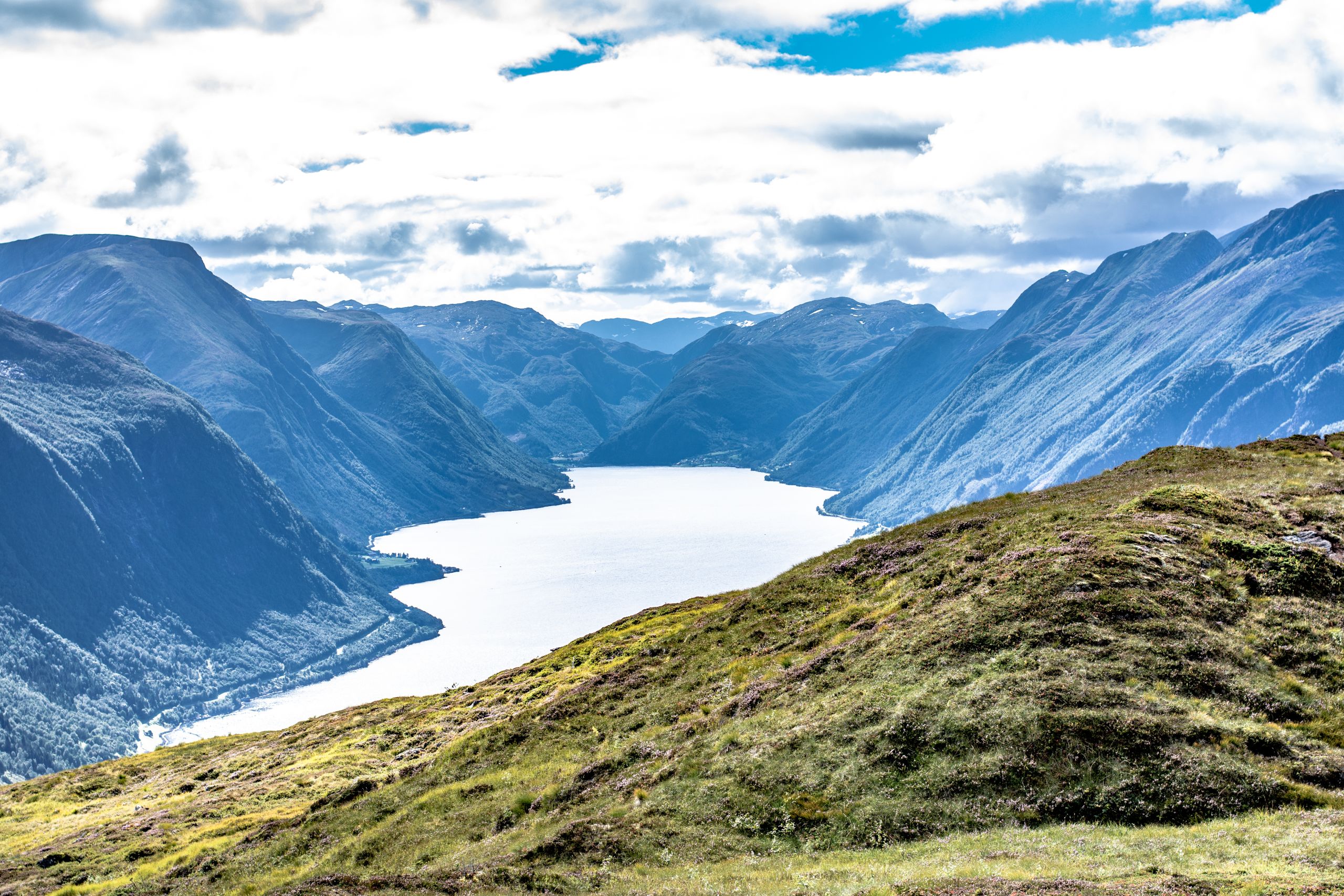
Selja (3) island is where the monastery lays.
Next to it there is Selje (4) which is the mainland village.
In Selje a day hut (4), located on an height, is reachable by walk from which a beautiful landscape on Selja is visible. This hut serves as inspiration, on a structural matter, for later concepts introduced in this project.
The Stadhavet (2) sea area is very dangerous, that is why few kilometers southern than Selja the first ships' tunnel (5) in the World will be built.
This will eventually increase the cruise ships traffic in the area bringing new group of people to visit the holy island as well.
Hoddevik is one of the main destinations found within the area of "Selja Kloster". It's a water sports and sightseeing touristic spot, especially for surfers.
It might be a good occasion to signal the direction to the monastery from that area also because at least two main hiking trails connect already Hoddevik with the village of Selje.
Future plans: a new monastery
Architects Andreas Brunvoll and Peder Brubæk Bua's project on Selja
Knowing the next steps
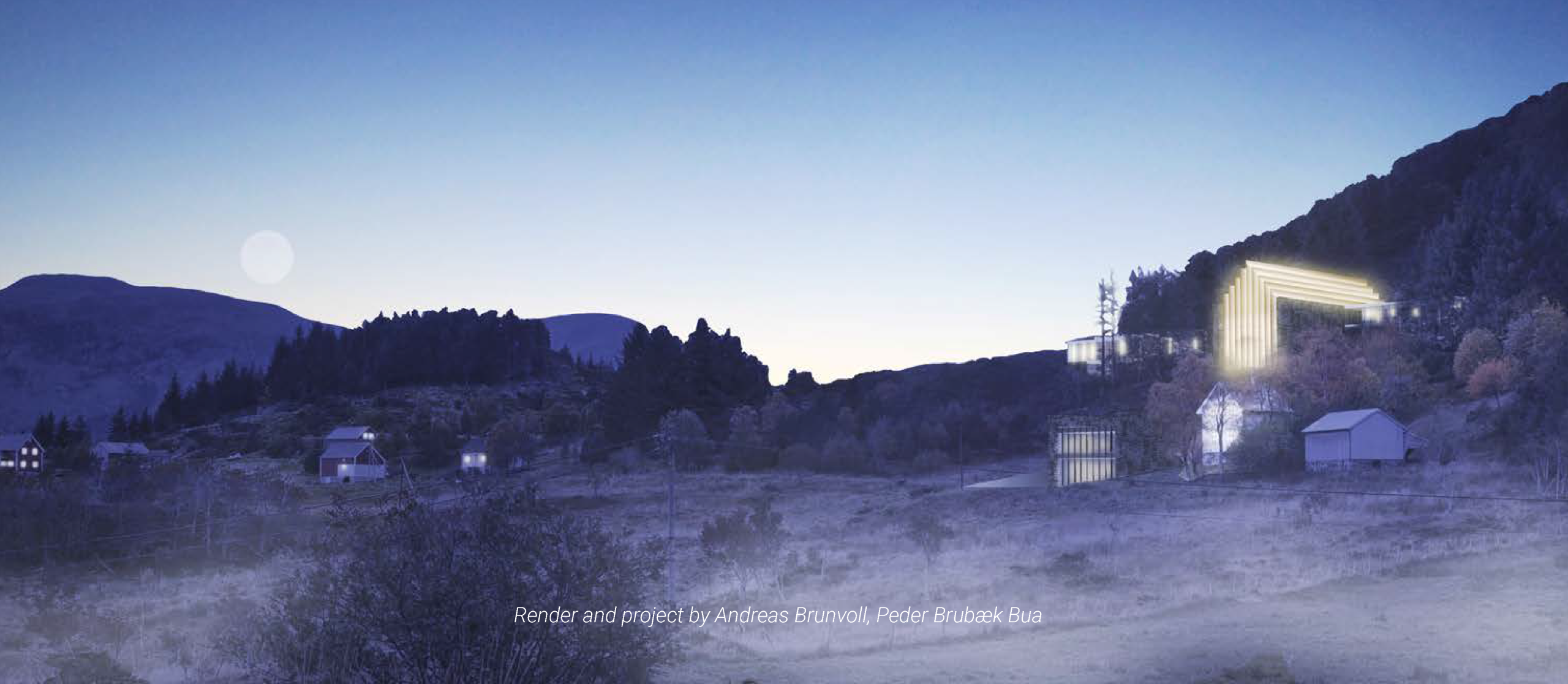
It is relevant to not only consider the existing value present around the location of Selja, but also to include future projects that might be developed.
This project, from 2014, aims to bring back monastic life on the island of Selja while also welcoming pilgrims. This new visitors center and monastery comprehends a church, a library, a botanic area and much more.
The land, facing the village of Selje, defined here as "Tunold site", is the designated place where the new monastery will lay its foundations.
The ancient monastery is on the opposite side of the island, facing the open sea.
Social, sharing and resting areas are also planned.
Plants are grown and harvested in this external area where tradition and participative learning experience merge together.
This project is one of the two architectural project which has been developed in order to bring monastic life back to the island of Selja. These plans are still active and possibly developed in the near future following decisions made by the Stad municipality.
All pictures, renderings, drawings and concepts presented in this section are from architects Andreas Brunvoll and Peder Brubæk Bua
The Aura project
Matteo Baratella's proposal: a participatory approach
Establishing a new visitors' experience at Selja Abbey
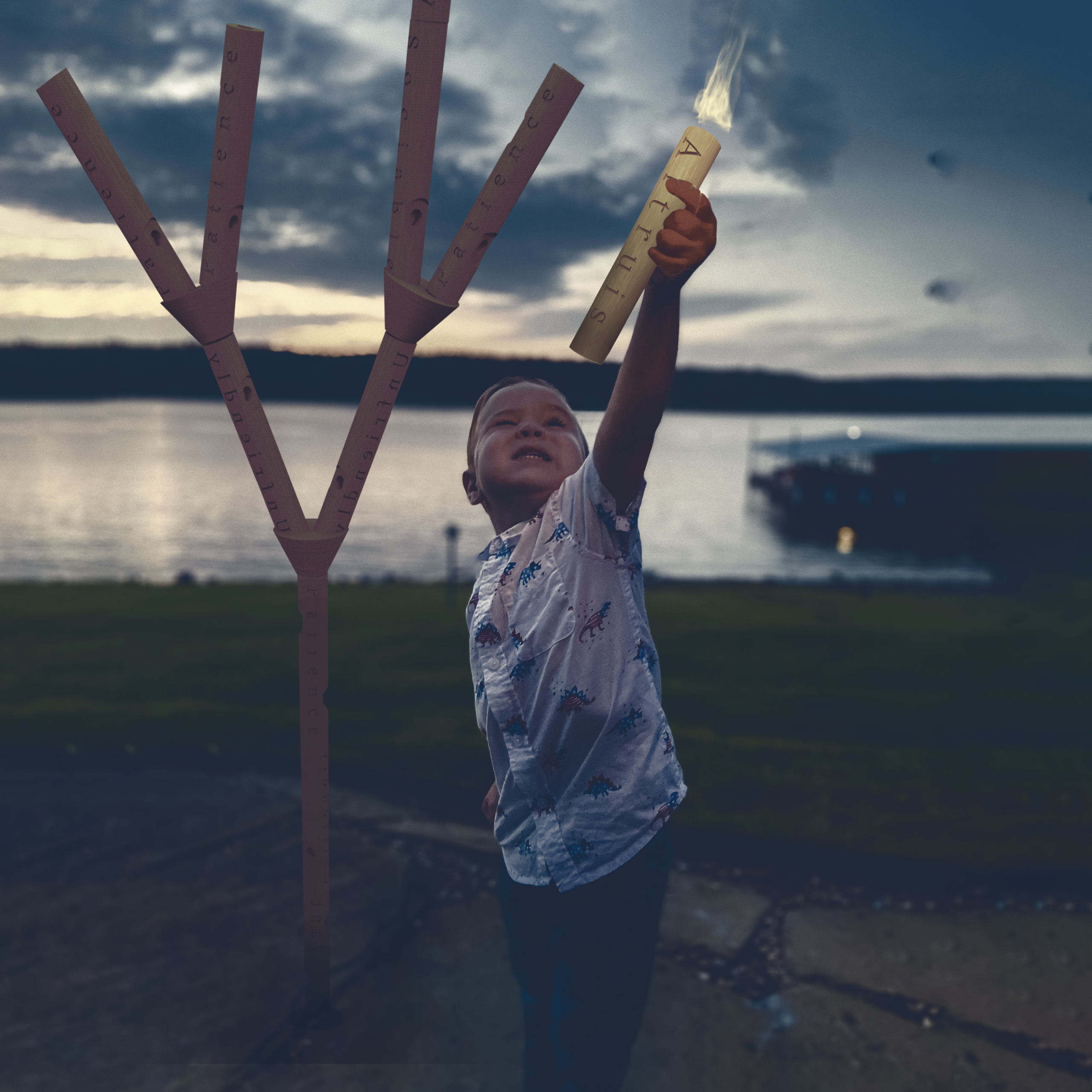
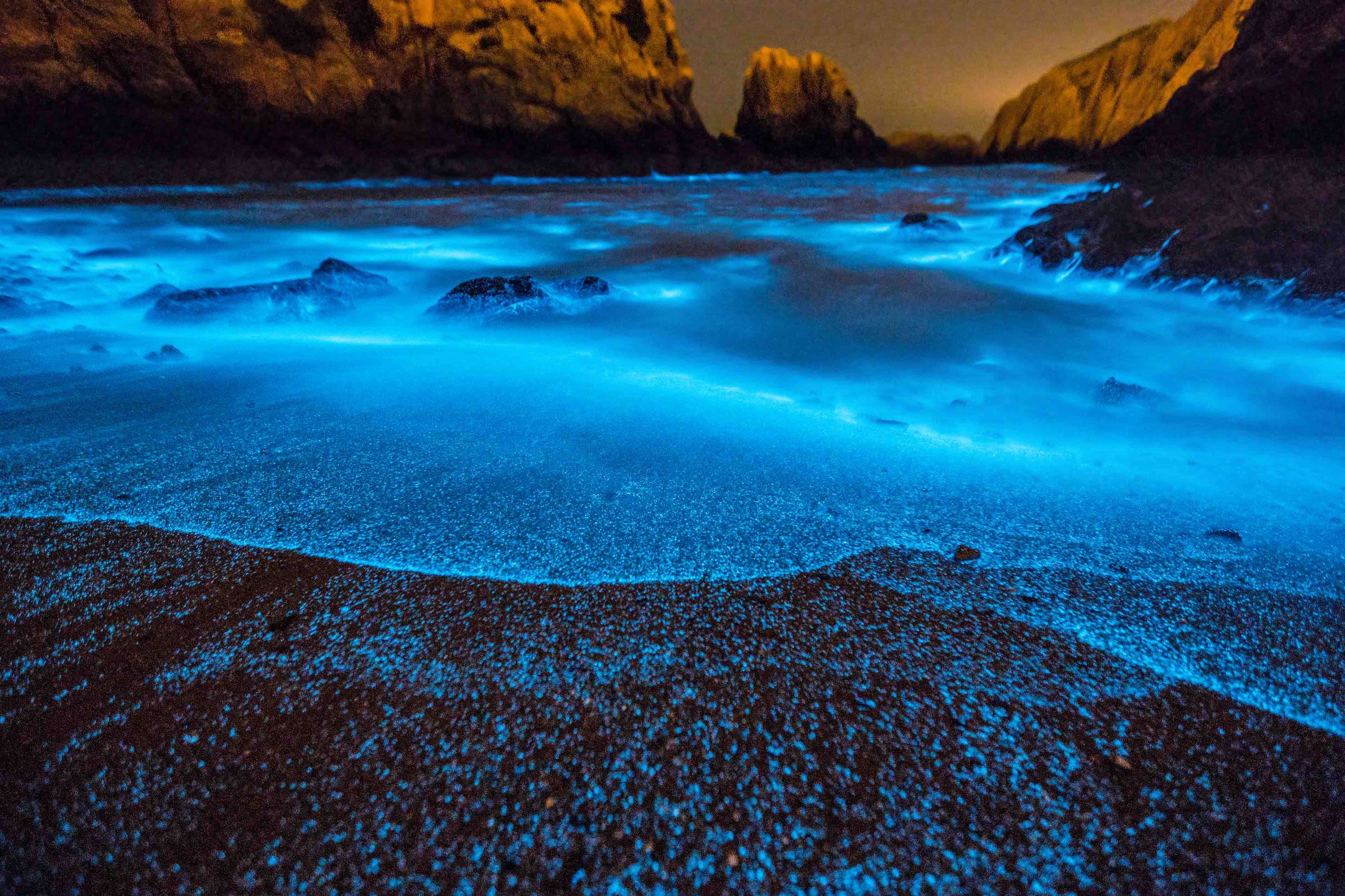
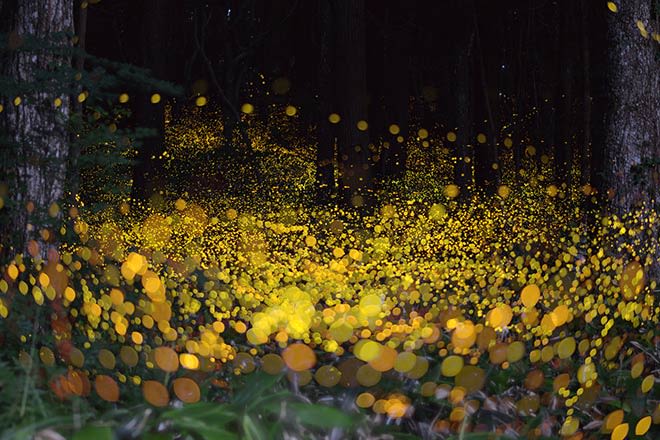
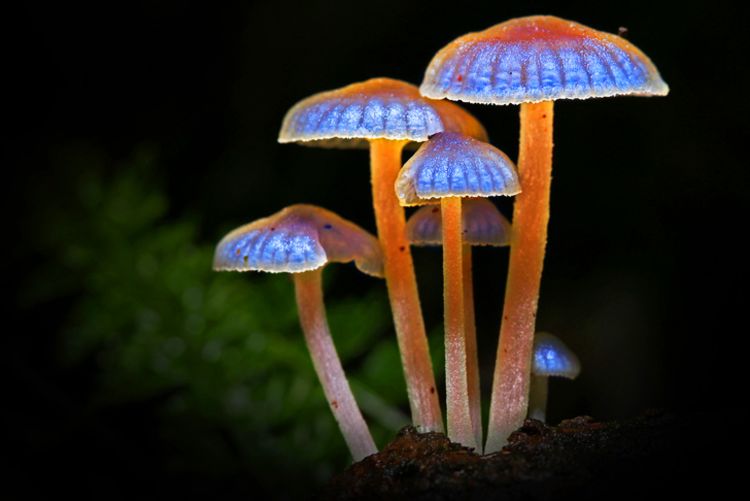
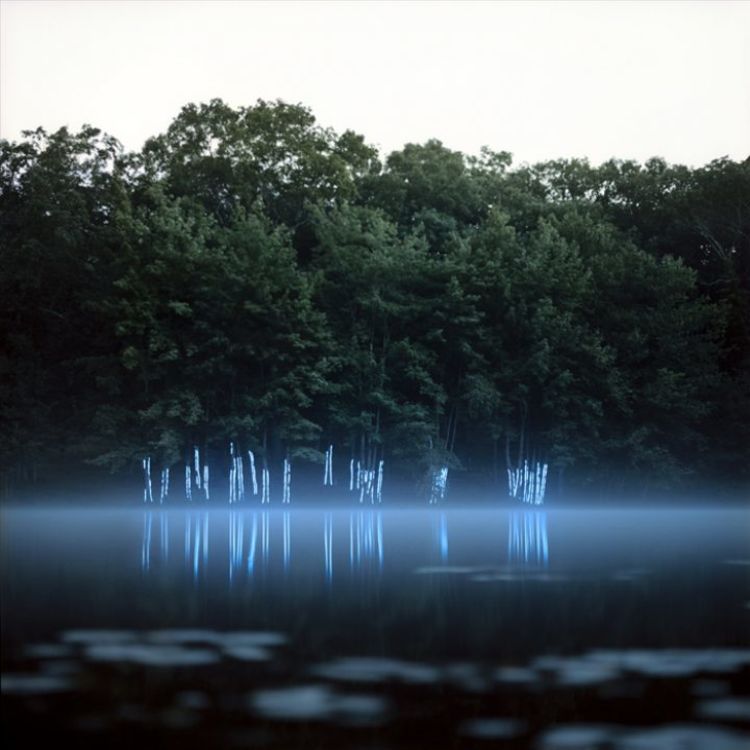
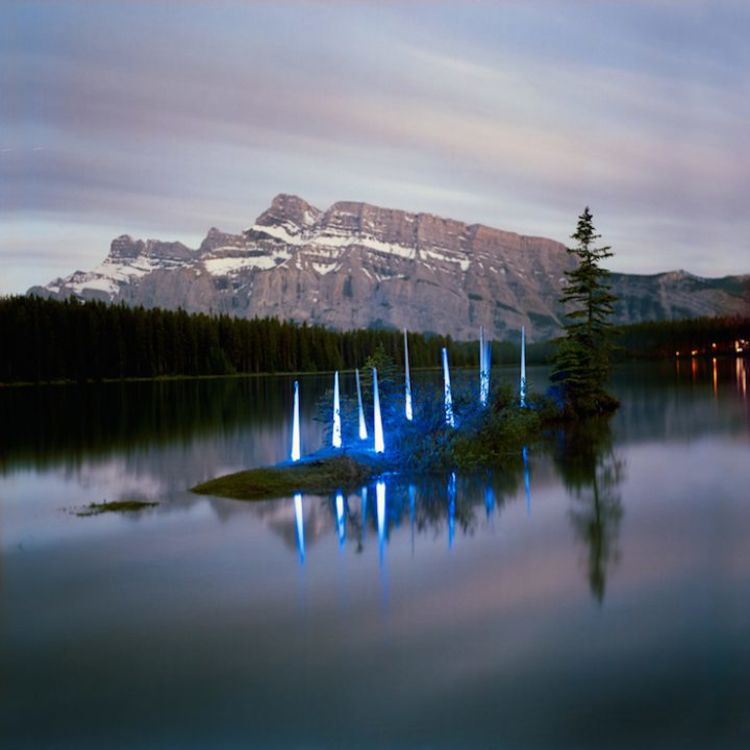
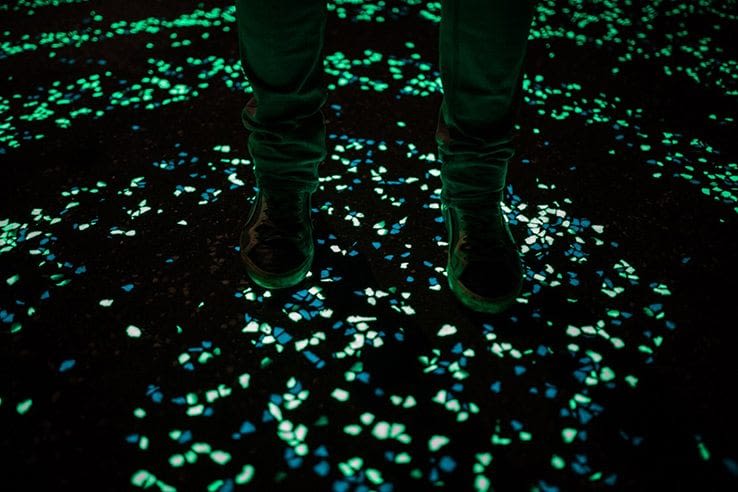
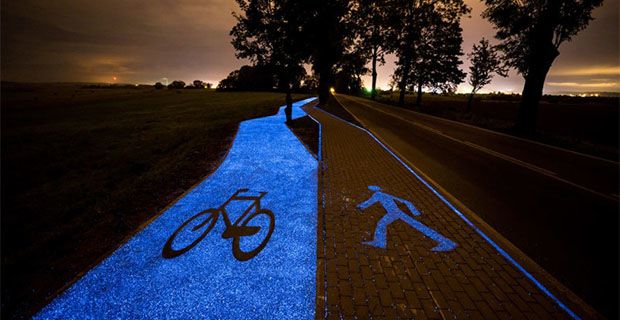
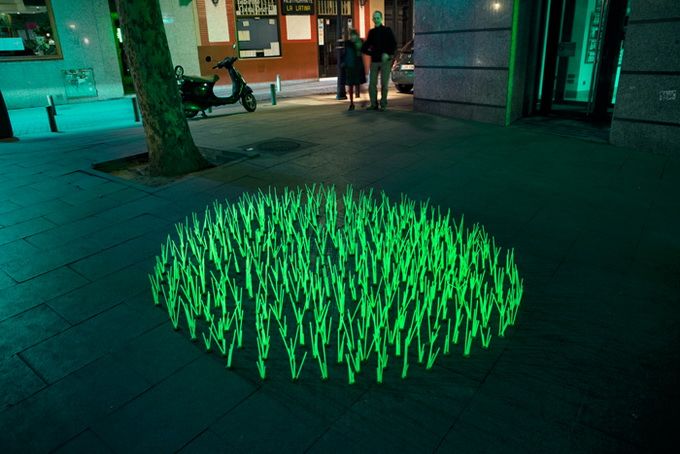
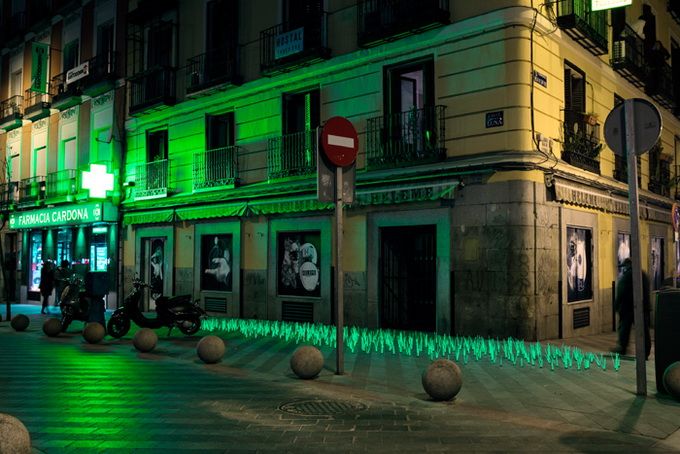
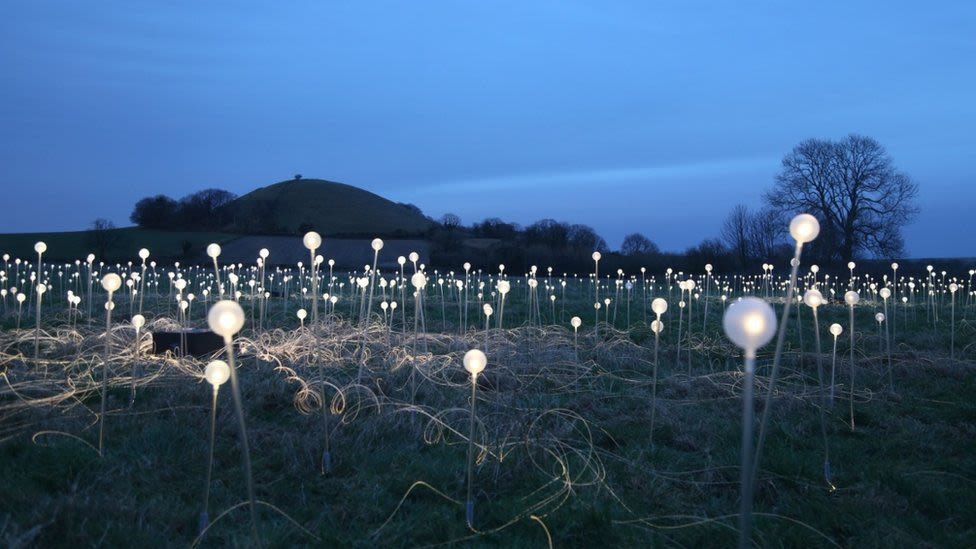
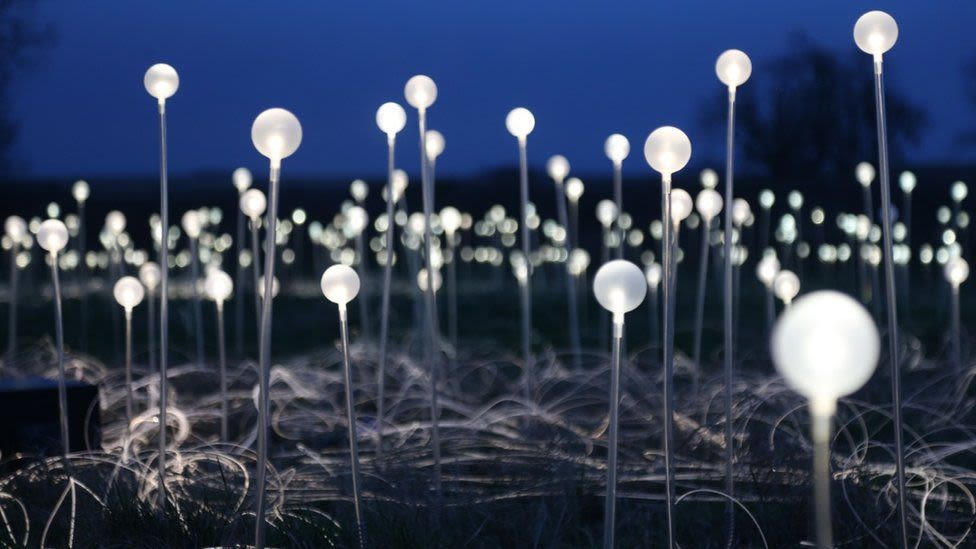
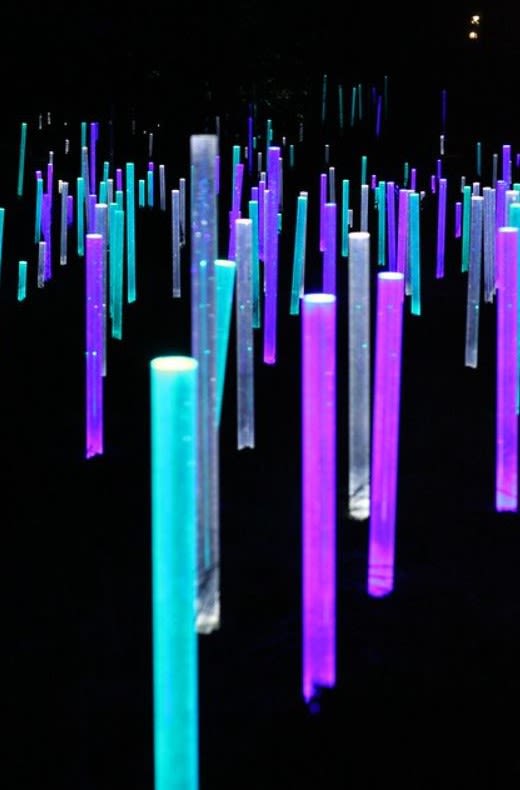

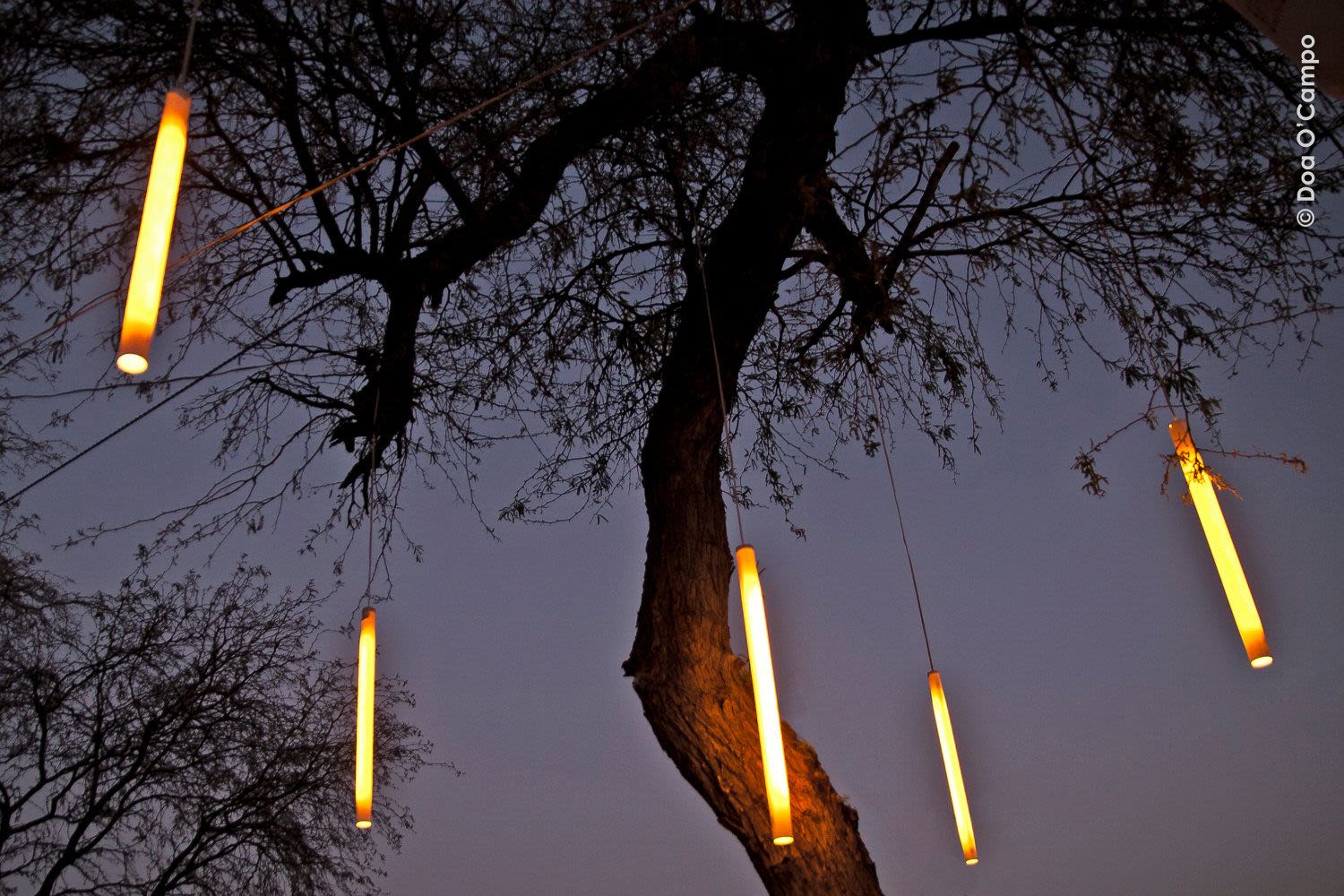

Garden hanging lights
Garden hanging lights
INSPIRATION
The above pictures represent the general inspiration nurturing the approach and the project. The "Selja light" project started from the nature, looking at glowing fireflies and blue lighted algae from the Pacific Ocean. It then went towards glowing materials, paints and light projects.
CONCEPT
The concept revolves around a glowing wooden stick. It is a symbolical object standing for light, participation, connectivity, collaboration, learning, giving and taking. The wooden stick can be taken by any visitor and it leads people to experience participation activities during the visit at the Selja Abbey.
START
The visitors start their journey at the cabins present on the mainland on the village of Selje. There they visit, try, learn and experience different activities such as, for example, bookbinding. Every cabin is characterized by different traditional activities where visitors can try first hand also through the moderation of a guide.
TRY
After having tried or just visited a cabin in Selje, the visitor can take at least one of the wooden sticks, which can be found in the cabin. Every glowing stick is personalized and can be combined with others' wooden sticks.
VISIT
At this point the visitors can embark on the boat towards the island of Selja where they visit the old monastery and visit the holyisland. During the visit they still have the glowing wooden stick with them and can found metal plugs around the island where to insert it.
PARTICIPATE
The metal plugs can be found around the monastery area or along the main paths which cross the island. Once the first wooden stick is plugged on the ground others can connect or insert theirs too on top of the initial one. This practice allows to build and grow up symbolic trees around the island.
LOOK
Once the trees are completed they can be harvested and brought to the shore by the staff. At the shore the Amphorae can be found where to plug in and secure the trees. The Amphorae are then connected through a wire and make them float to the other side of the sea fjord in a symbolic act of balancing giving and taking, light and darkness.

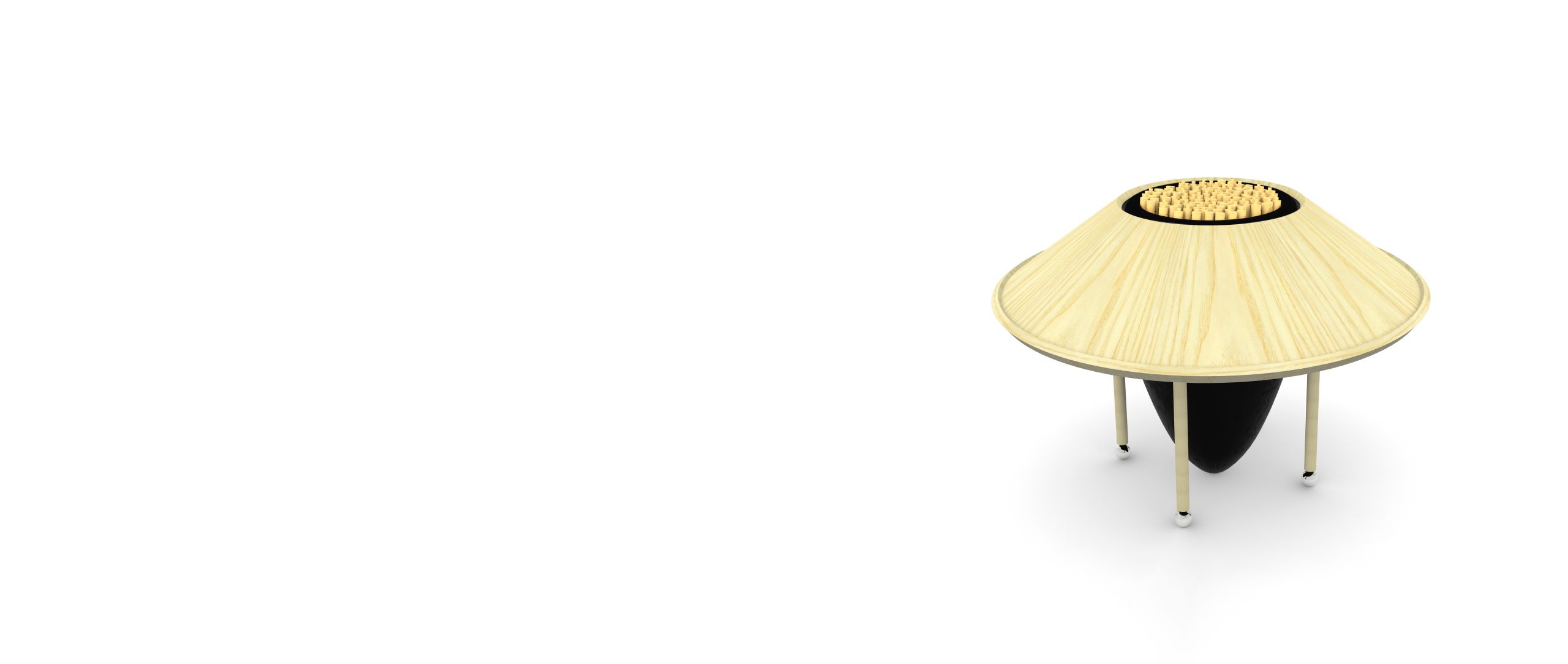
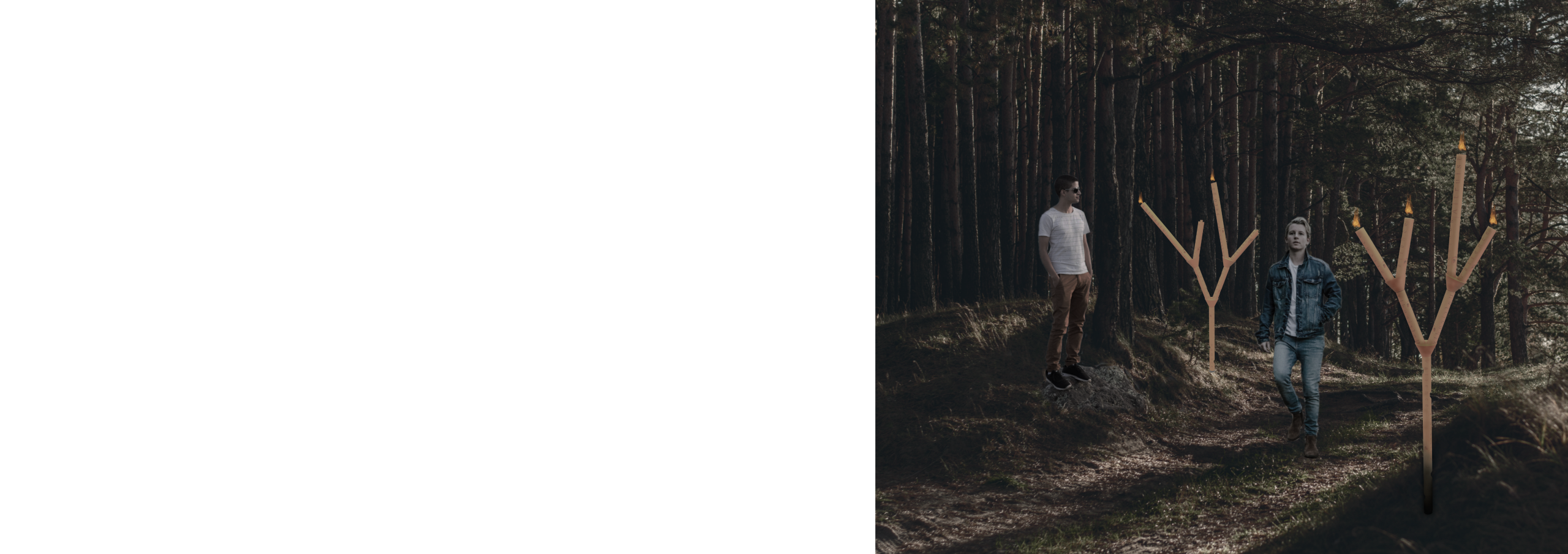
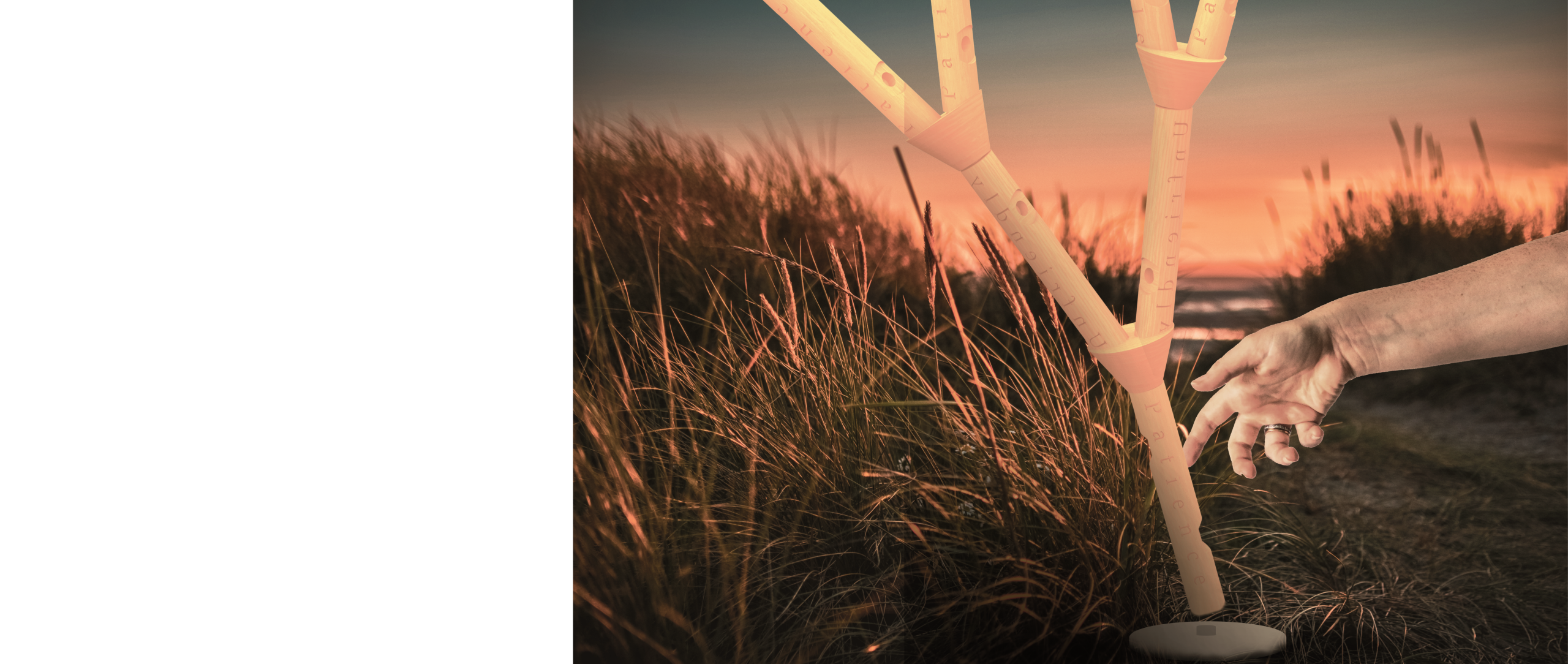
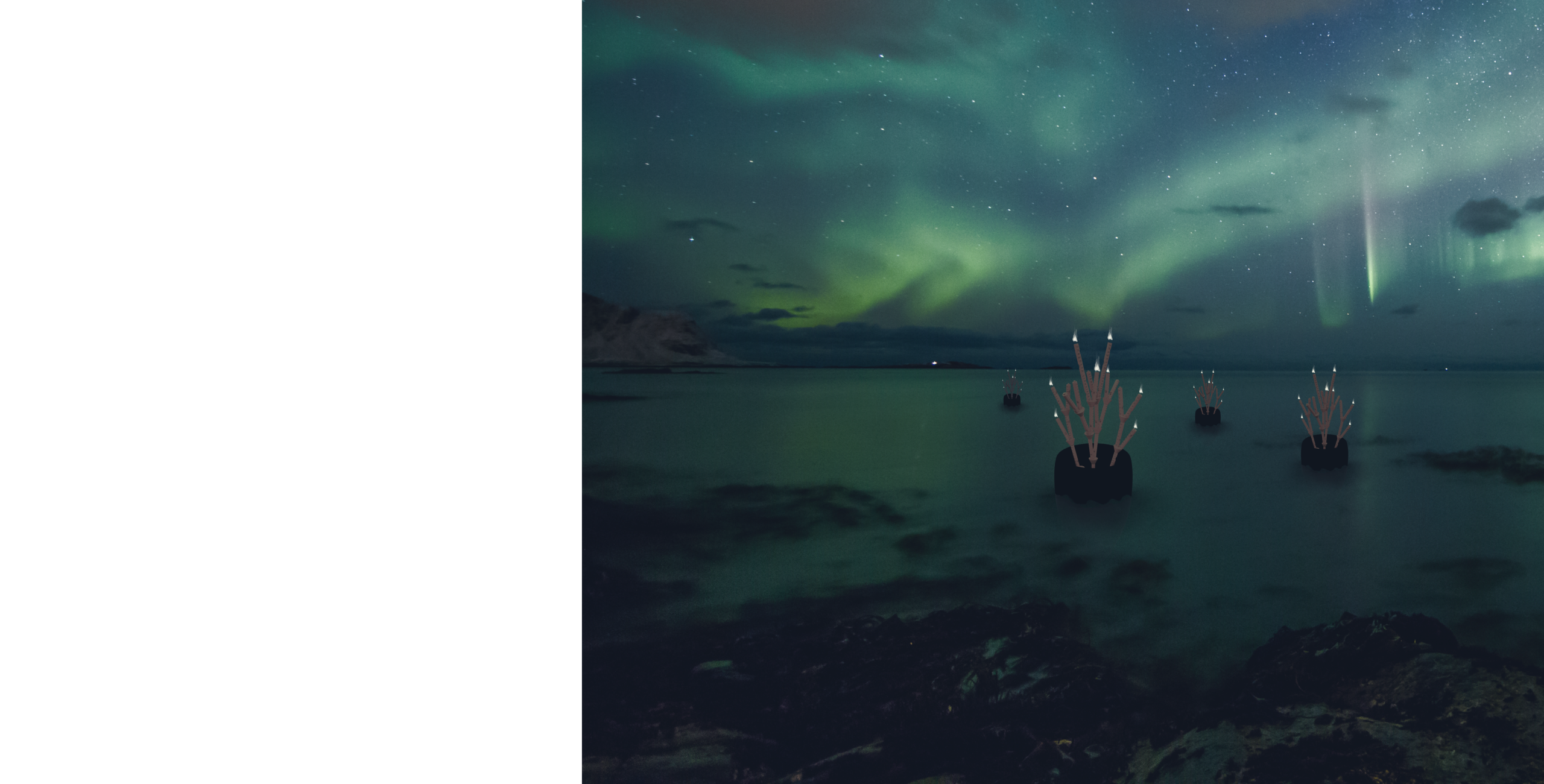

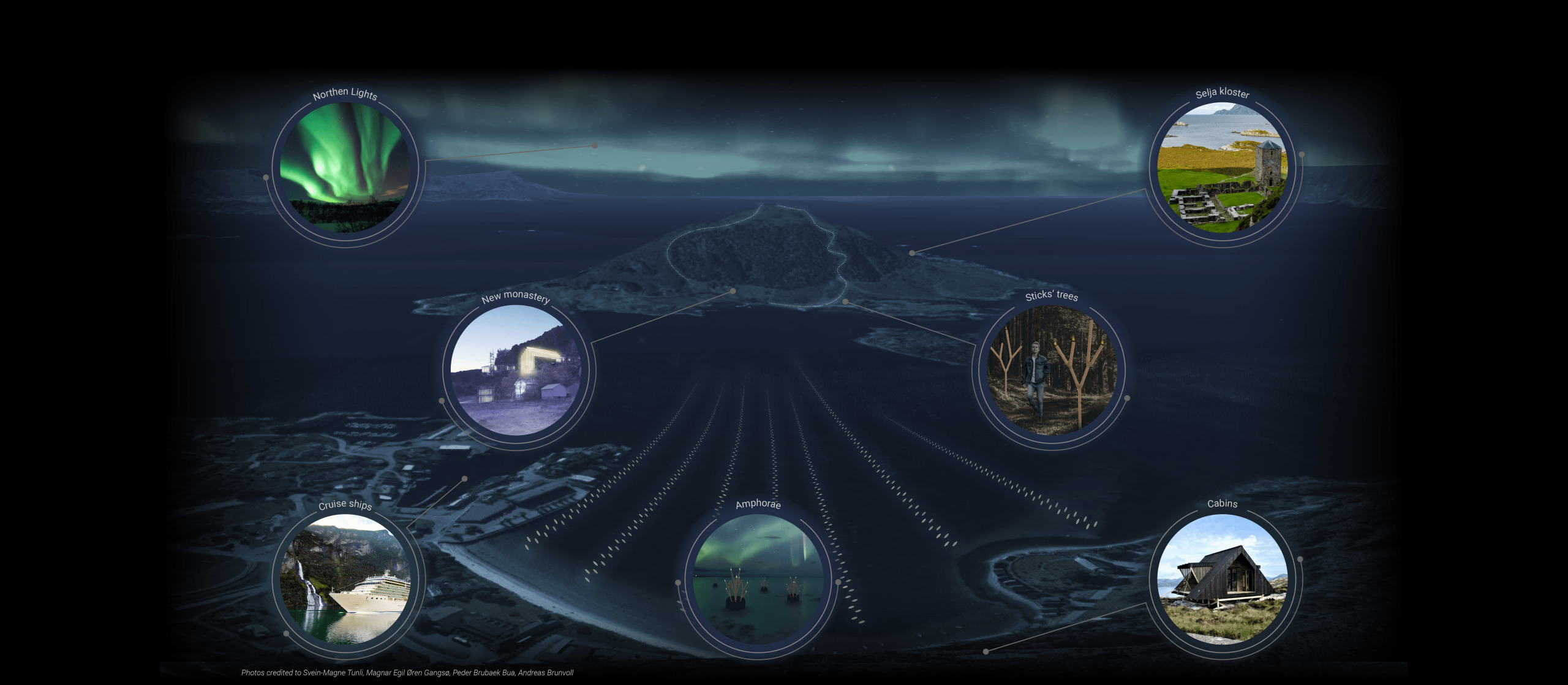
Visual representations
Researches through drawings and collages
Understanding objects, shapes and places
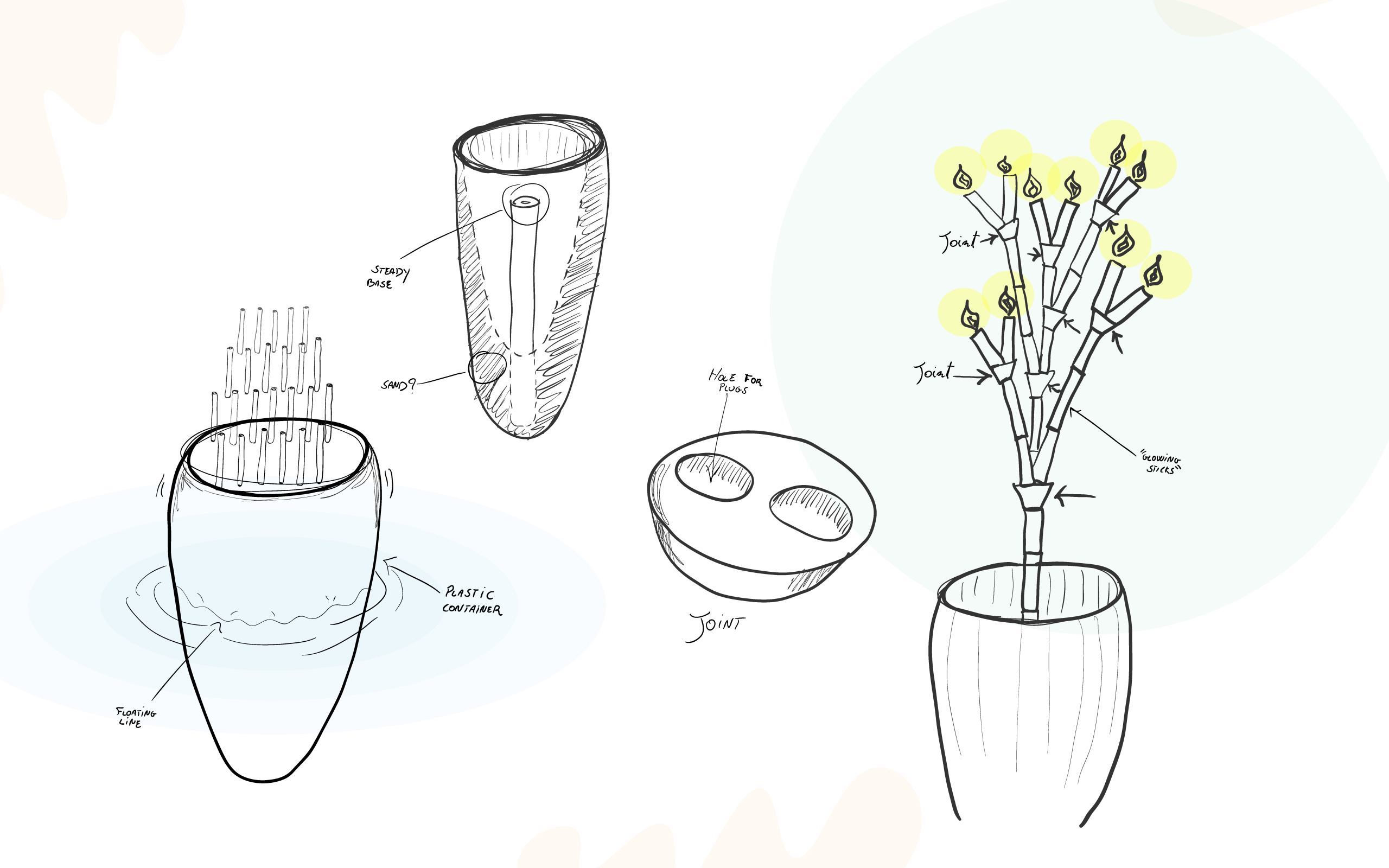
Here is the first prototype sketch of the wooden stick.
The wooden stick is characterized by:
- Glowing paint
- Connectors/plugs on the top, bottom and sides
- Candles/lights' cavities holders
- Carved qualities and defaults
The wooden sticks are gathered in the Amphorae which serve the double function of exhibitioners and floating systems. The wooden sticks are modular and are used to build symbolic trees through collective participation.
The "Amphorae", when used as exhibition stands, lay in the visitors' centers, in the village of Selje, corresponding here to the red markers.
Here is the sketching of the entrance of a cabin functioning as visitors' center.
In each different cabin, visitors can experience a different tradition transmitted by the monks, such as: bookbinding, botanic and blacksmithing.
Here on the right the plan for the cabin as visitors' center. It comprehends the Amphorae, which is containing the wooden glowing sticks, a counter and two glass facades alternated to wood stripes.
These cabins could possibly use the fjord's constant temperature in order to produce electricity with the purpose of sustaining their own consumptions. If in excess, the electricity could be sold to external needs.
This Amphora is surrounded by a circular wooden panels used to display objects and provide a base where visitors can try activities such as bookbinding.
The Amphorae are made of plastic in order to float easily as buoys in the sea water. The plastic could possibly come from recovered plastics on the Norwegian coast lines. In this way this project may be part of a process which collects, cleanses, reprocess and reuses materials in a sustainable way. This will help to compact dangerously free plastics into large and controlled ones.
Different kinds of visitors
Locals vs externals' needs and desires in Selja
Understanding the needs of a variegated group of people
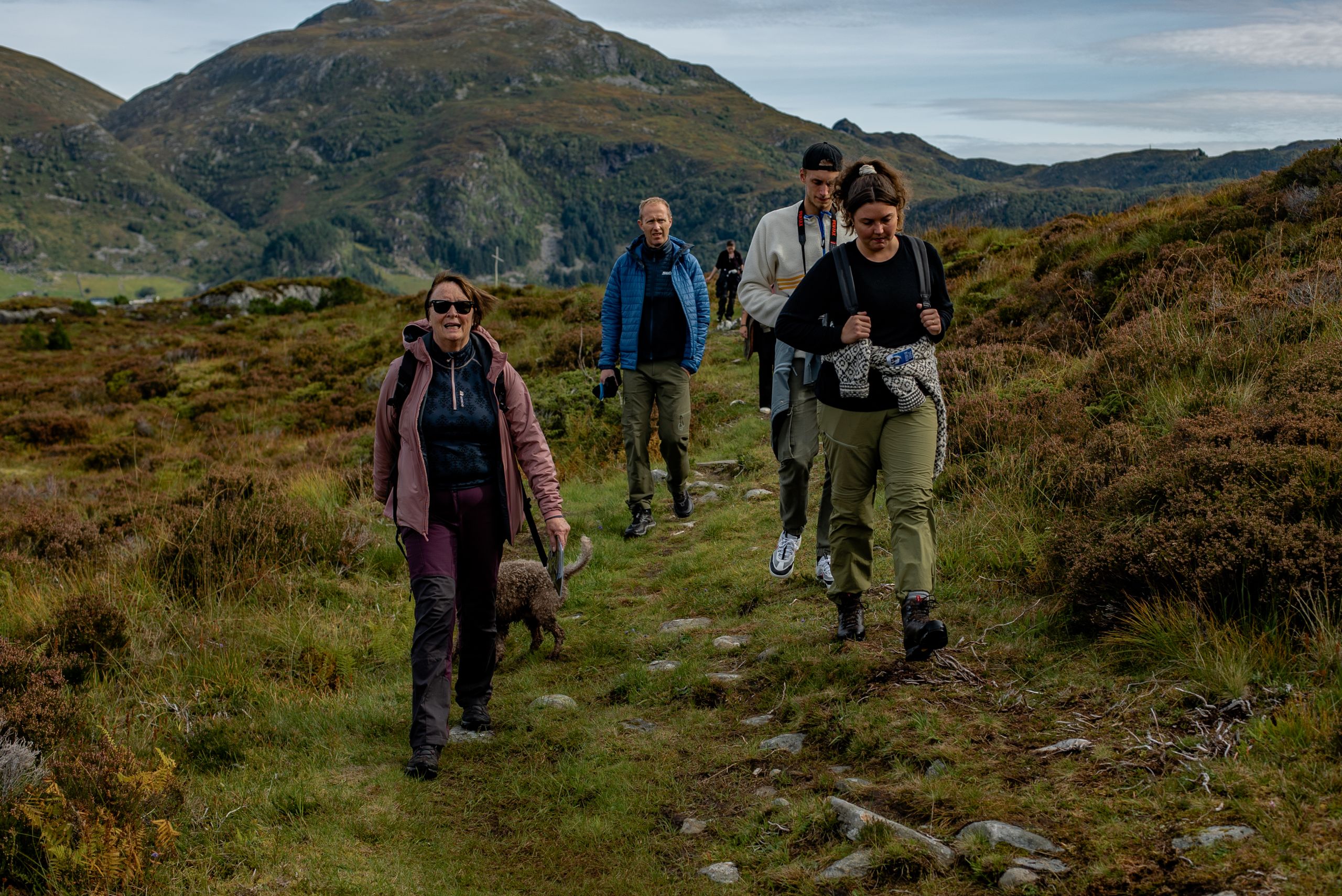
The tourist
Maraike is a young tourist from Germany, who just decided to spend her holidays in the west coast of Norway. She is very interested in history and therefore has planned all the important sites where to stop by with her van. She needs a camping area or a van resting area otherwise she would not be able to stop.
She wants to meet new people along the travel and she hopes to mix and integrate with the locals. She really would like her experience abroad to be the most connected with local traditions, uses and heritage. Anyway, she has red a book on the Norwegian unwritten social rules before travelling and she got a bit scared because she is very extrovert and she doesn't want to always stick out as a foreigners and especially as a tourist. In fact, she has learned that Norwegians tend to be shy, introvert and not very open to externals especially in the country side.
Therefore, she might be a bit thrown off by lack of international environment and eccessive presence of Norwegian language. She hopes guides and written explanations are also in English.
The weekend traveller
Anita is a young Norwegian citizen from Molde, 4 hours far from Selja Abbey, and she decided to travel in the weekend and try to discover a new place. She got interested into Selja Abbey because she heard that the visiting experience is based on the local traditions and heritage know how.
She travels by car and hopes to find parking lots in Selje. She is either going to couch-surf with a friend or stay at a local AirBnb. Nonetheless she still has to book the stay and she is a bit worried because there are only two places registered on AirBnb in Selje and she really wants to stay in the village.
She really loves arts and culture and she hopes to find some explanations on how the Abbey was built and with which techniques. She would be really interested in knowing what activities were the monks doing in the monastery throughout the Middle Ages.
Anyway she is really afraid of big crowds and she doesn't want to mix with large tourists groups. Also she is turned off when history is excessively present during a visiting experience.
The local
Eirik is a Norwegian elderly guy living in the village of Selje since ever. He knows everything about the holy island of Selja and likes to visit once in a while. He doesn't need any means of transportation to reach on the island since he can be completely autonomous with his own small motor boat.
He really hopes to reach Sunniva's cave once again as he used to do in the past because now he suffers from a bad injury at his left leg and cannot walk the big steps up hill anymore. He hopes something might be done for people with similar struggles.
He is interested in local heritage and hopes to find out something new or more when speaking with the guides. Anyway, he is really out of the conversation when the English language and when technology are involved. For him screens and virtual buttons are representing constraints. He wants to interact through analogical means and objects.
The religious worker
Cecilie is a Norwegian church worker. She belongs to the Christian protestant religion and actively work in the Trondheim region as a priest. She is part of a committee devoted to bring back monastic life on the island of Selja and tries to actively work on that too through the participation of the Stad municipality.
She gets very angry when she notice secularization processes in meaningful destination such as Selja and she wants to keep the island strictly connected with religion, trying to exclude laic and non-religious activities. In fact, she is happy to see when religious symbolism is used in touristic destinations.
With her committee, she likes to travel once a month, by private bus, to Selja and meet with other important local members. She hopes once a new monastery will be built soon so that Christian monks can once again operate on the island.
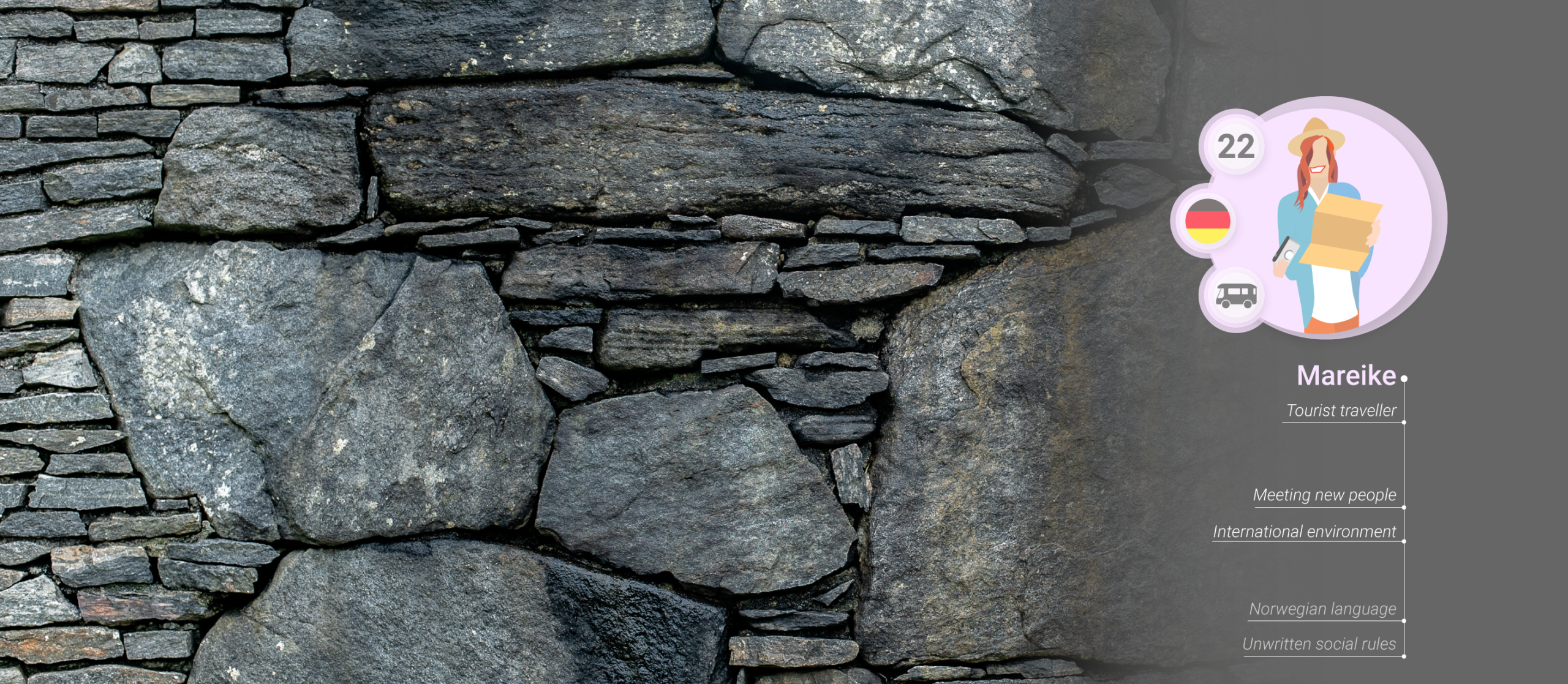
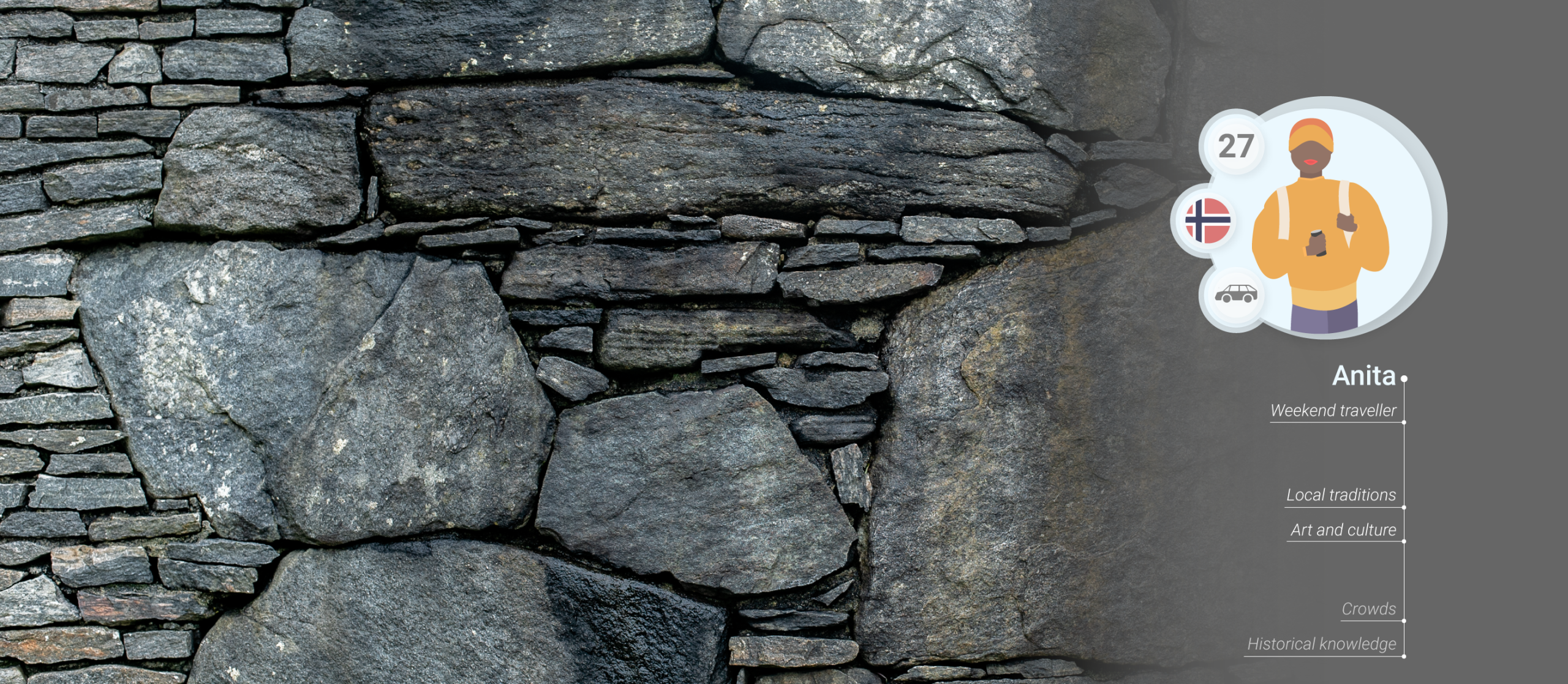
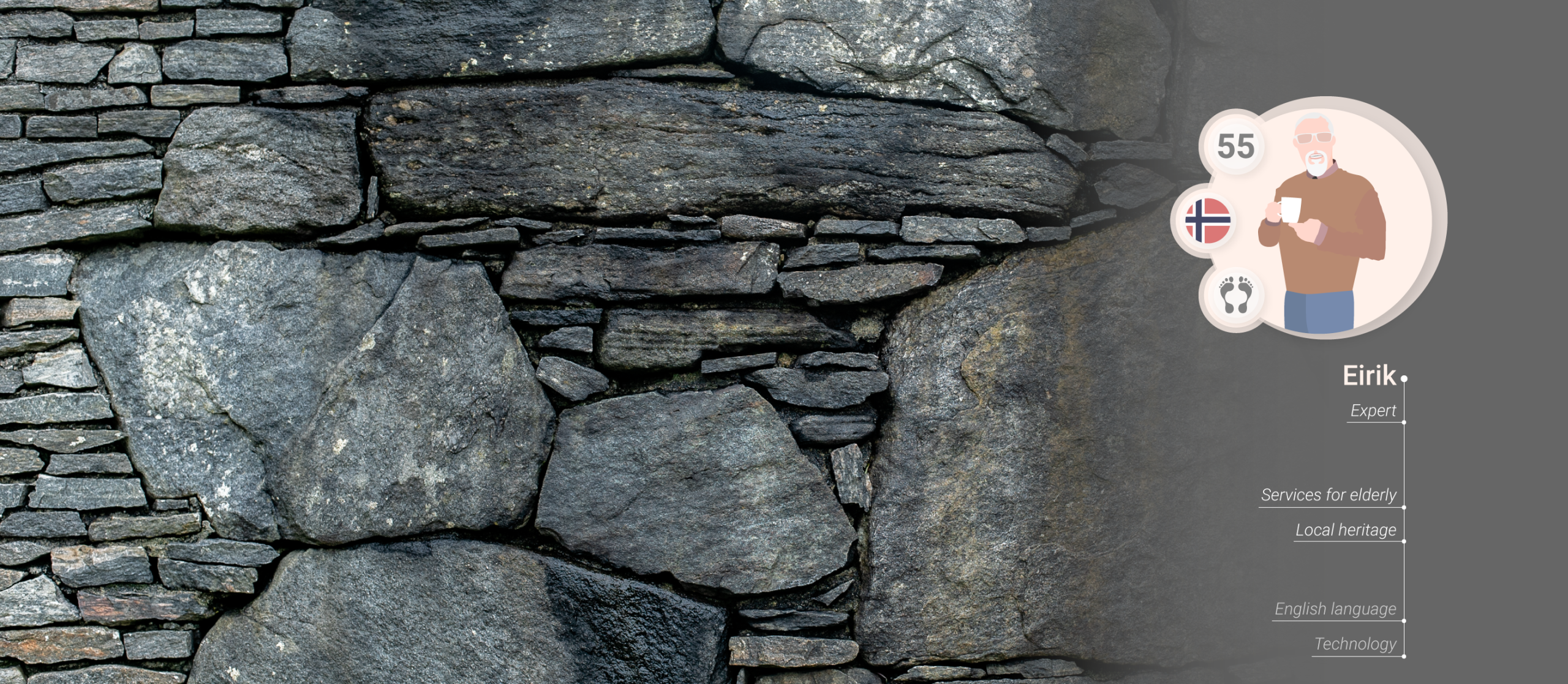
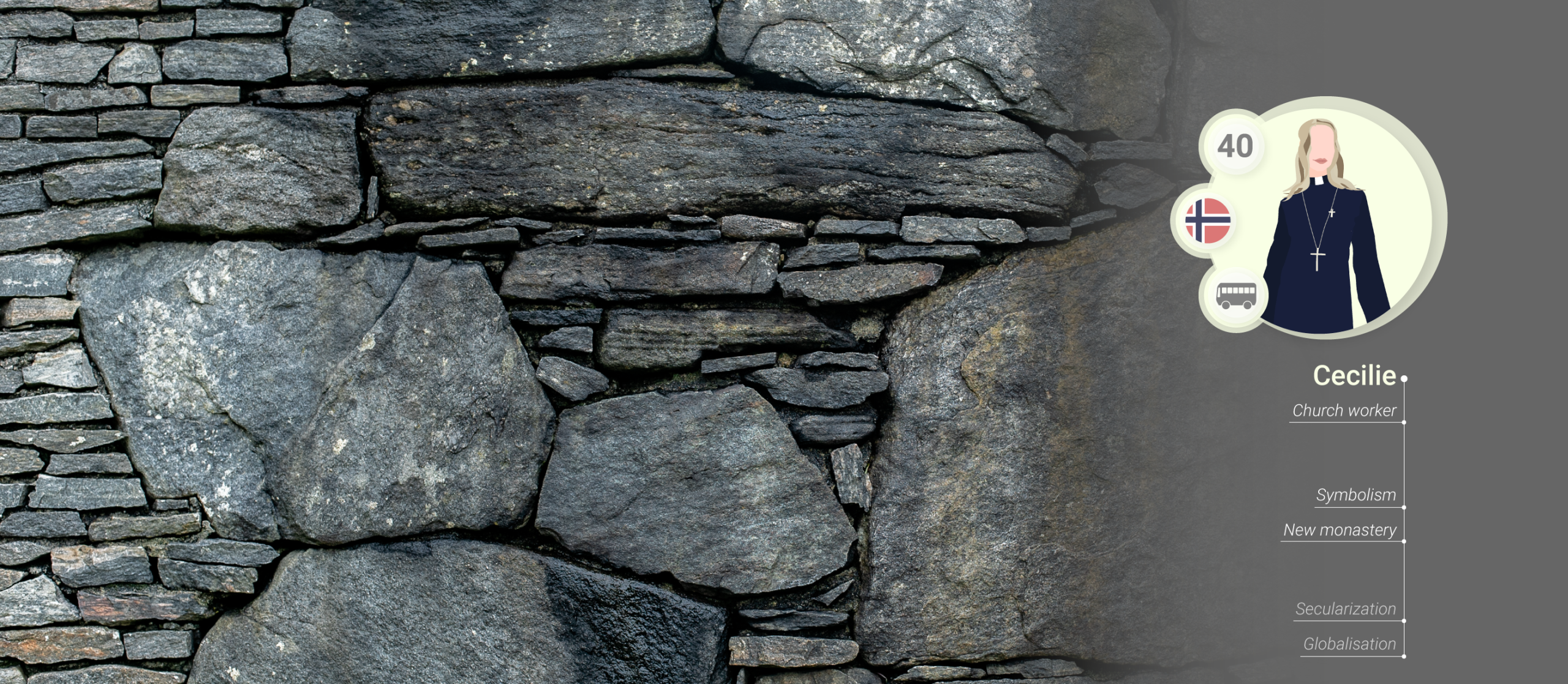
The above personas are directly drawn by the biographical data collected through a survey that has been send to locals of Selje and externals potentially interested people in visiting Selja.
All the graphics presented in this section represent the starting point of the design project. Matteo Baratella created the survey and collected the answers in order to establish necessary and relevant design choices within the project.
Every page compares first the answer given by the locals and then compared with answers given by the externals. This is because for the design project is very important to know what are the necessities of locals but also it is important to know how to attract new potential external target groups.
Question: Who Norwegian society should help more?
Locals' answers: Elderly, Disabled and Young
Externals' answers: Young, Old/Immigrants, Disabled.
"Selja's magic lies in the fact that it is a Christian holy place. If you take away Christianity, you are left with nothing, just a soulless tourist attraction."
Question: Where should new structures and projects take place?
Locals' answers: Selje village and not on Selja island.
Externals' answers: rather on Selja island.
"Buildings should possibly come on the mainland and never lie on the holy island of Selja."
"Selja is an island, physically and spiritually. Its detachment from, not only the mainland, but also the society is one of its core strengths that really enhances the visitor experience. It must never be too crowded or overly accessible, as that will compromise the heritage assets of the location It must remain a quiet place for learning and reflection."
Question: What does Selje village need more of?
Locals' answers: Family activities and elderly's services.
Externals' answers: Hiking trails and quiet areas.
Question: How would you prefer to interact with other visitors?
Locals' answer: as a group.
Externals' answers: as an individual.
Here are all the results as on graphic table compared as usual between first the locals then the externals.
"Selja is the Church's birthplace in Norway and then it comes naturally that such a time should be an ecumenical spiritual center."
Visual identity
Possible branding and styling solutions
Creating visual elements for the new visitors' experience
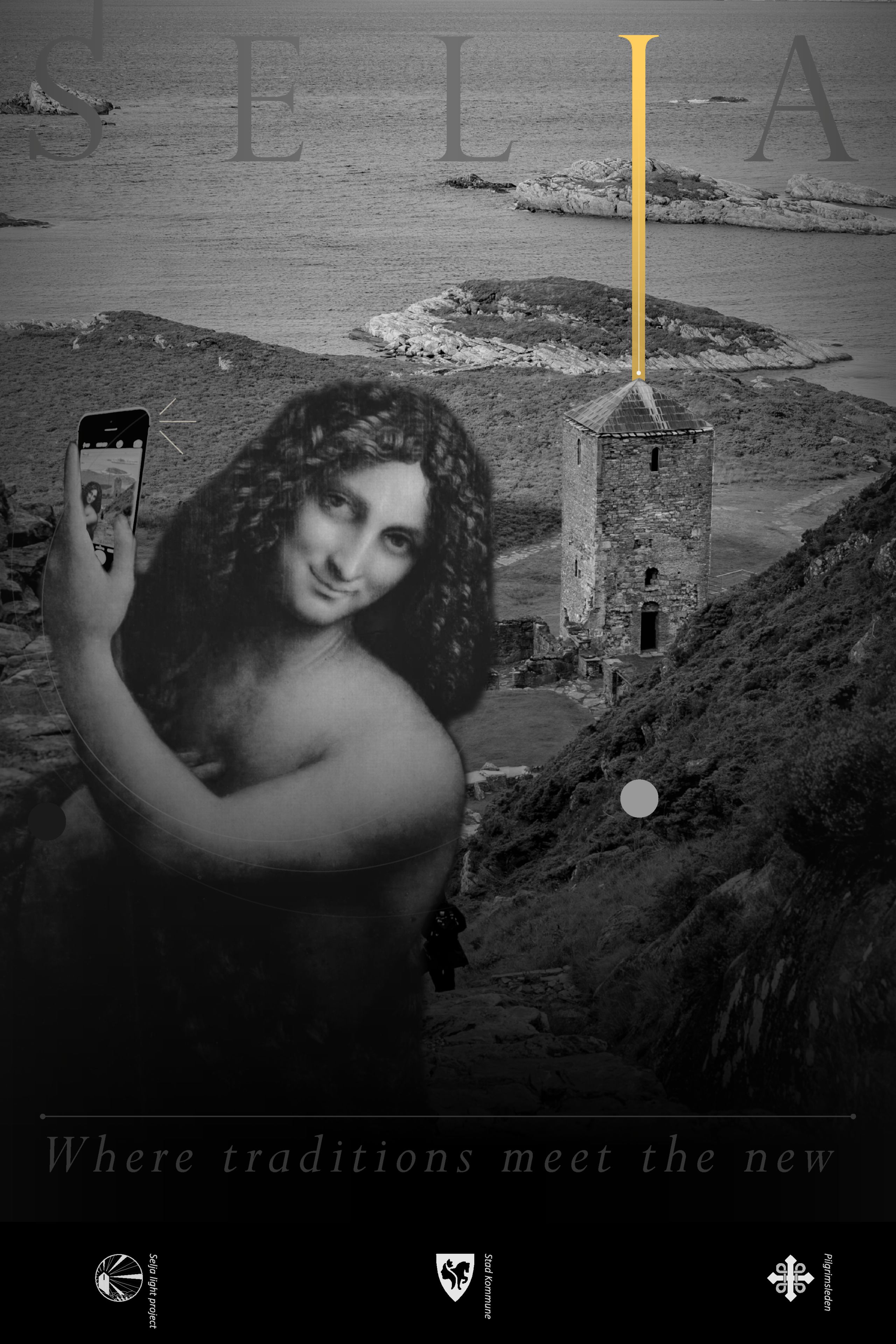

© 2021 Matteo Baratella
